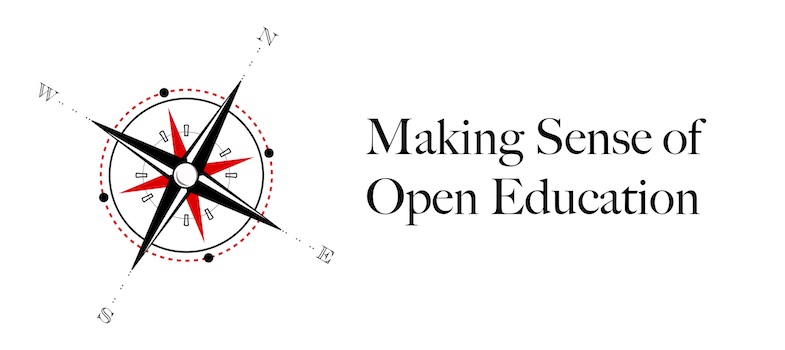Laura, great graphic and explanation. I particularly appreciate how you differentiate the broader philosophy of open learning and some of the tools and techniques that can be used to enable it. Both distance education and e-learning can be closed or open, and they are both technologically enhanced. MOOCs, in spite of the "open" in their name, range from very open (especially earlier cMOOC configurations) to proprietary and closed in numerous ways.
- Jump to: Parent to post 1
- Permalink to post 2
Nice response, Laura:
Like you, I emphasized connections between distance education and e-learning (and you took it a few steps further, e.g., fitting in open education and MOOCs).
Today's activities began as sort of confusing for me. I kept having an uncomfortable feeling that I was missing a main point. The readings seemed to strongly emphasize the significant distinctions between the eight concepts. I mean, that graphic with the sets of differently colored dots, enveloped and impenetrably segregated by non-intersecting hyperbolae, surely proved beyond any doubt that these concepts have nothing at all in common, right? Yet silly me--I believed there was great conceptual overlap between at least two of them (namely distance ed and e-learning).
- Jump to: Parent to post 1
- Permalink to post 3
Irwin Devries Post 4 in reply to 3
• 4 June 2018, 5:19 AM • Edited by the author on 4 June 2018, 5:36 AMMarvin, thanks for the comment. It's important to explain that the article uncovers and documents gaps that actually exist in the research, not conceptual relationships that we all believe should be represented and linked together as you point out in your example. And it's important to note that the authors certainly agree with you: researchers and developers in areas of open education such as distance education and e-learning have worked far too much in isolation from one another, and haven't crossed over their findings in the ways they could and should have done. Worse yet, past research is all-too-often being ignored altogether. For example, with the recent rise of branded MOOCs over the past few years, it was as though the whole field of educational technology, distance education and other related fields just appeared courtesy of the genius of a small cluster of Silicon Valley venture capitalists, as if earlier research in related fields simply did not exist. To emphasize the point, here is a quote I'm sure everyone will agree with:
"Appropriate application of media, technology and telecommunications to education is capable of individualizing, humanizing, personalizing and optimizing instruction and learning. As a result, the quality of education will be improved and will provide more and better education to all learners, and especially ... distant learners." Does this sound like a recent understanding of distance education and e-learning? Was it invented by recent MOOC developers? Nope, it was quoted in an article published in 1975, titled "The telephone as an instructional aid in distance education: A review of the literature." (Flinck & Rune, 1975) - https://files.eric.ed.gov/fulltext/ED112942.pdf. The field is rife with gaps, ahistoricism and missed connections, something that we hope emerging scholars and practitioners will begin to address.
- Jump to: Parent to post 3
- Permalink to post 4
